
The 7 Main Wine Faults
As wine drinkers, we consume a lot of flawed wine without even realizing it. This is nothing to be ashamed of because most of us just don’t know what wine flaws are.
The good news is that most wine faults are not bad for us. They just taste bad. So, here’s a short primer on the most common flaws in wine and how to sniff them out.
(For you wine geeks, be sure to check out the Master Guide for more!)
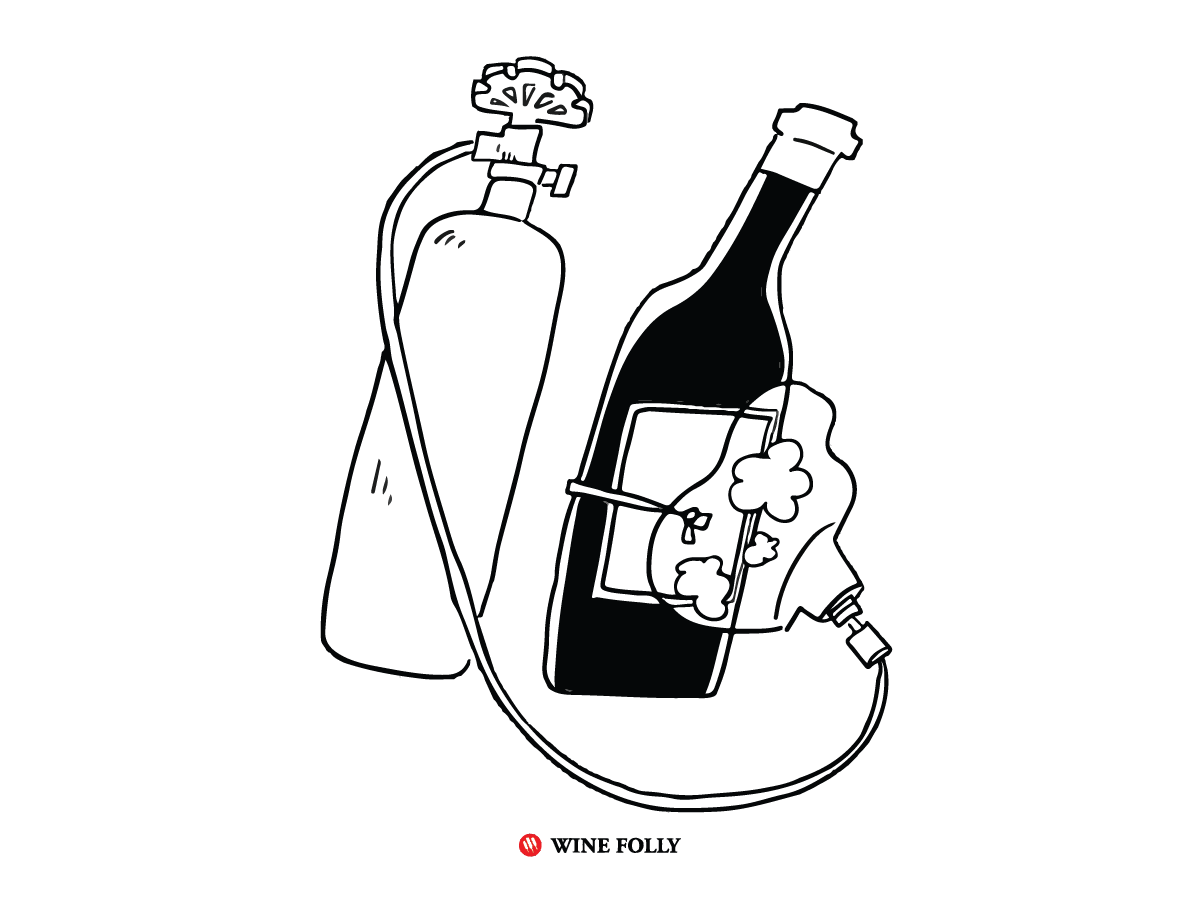
Oxidized Wine
- How you can tell: Oxidized wines lose their brightness, both in color and in flavor. Deep reds turn to a brownish-orange color and have a strange vinegar-and-caramelized-apple characteristic.
By the way, white wines are much more susceptible to oxidization than reds because reds’ higher tannin levels act as a buffer. If you really want to see what this looks like, open a new bottle, pour a glass and save that bottle for about a week. Congrats, you just ruined your wine. Drink some and compare it to that first glass you had. - What it is: Contamination caused by too much oxygen exposure. You know when you leave a sliced apple out on the counter and it turns brown? It’s that same process but in your wine. Oxidization is the most common wine fault in older wines and is easy to replicate at home with any bottle of wine.
- Can I fix it? No, but you can prolong the shelf life of opened wine by using a wine preservation tool. If the bottle is oxidized right off the shelf, it either had a faulty closure or was mishandled in transport. Take it back!

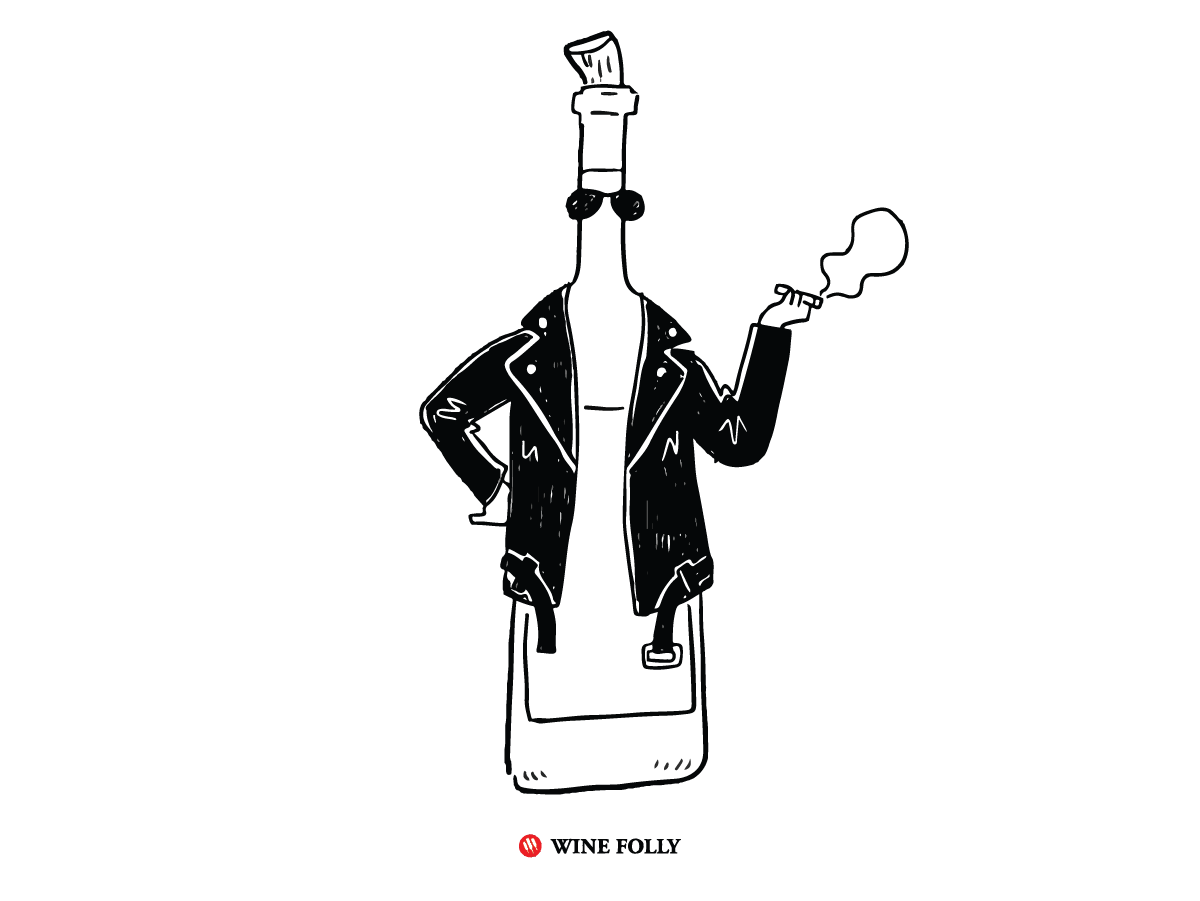
2,4,6-Trichloroanisole (TCA) …aka cork taint
- How you can tell: Cork-tainted wines have a dank odor that smells almost exactly like wet newspaper, moldy cardboard, or wet dog. These off-flavors dominate the corked wine, and there’s minimal fruit flavor.
Some estimates have placed TCA-affected wines as high as 2% of all wines bottled under real cork, making it the second most common wine fault. - What it is: A chemical contaminant that found its way into your bottle somewhere in production, usually by way of the cork. TCA can be present in oak barrels or the processing lines at the winery, which leads to entire batches, rather than single bottles, being ruined.
- Can I fix it? The old Saran Wrap formula, polyvinylidene chloride (PVDC), created in 1933 by Dow Chemical, chemically binds with TCA taint and removes it from wine. That said, they no longer produce Saran with polyethylene, which loses the effect! Your only option is to return the bottle.

Sulfur Compounds
- How you can tell: The most frequent manifestation of a sulfur-related flaw is called mercaptan (it’s related to dihydrogen sulfide). If you notice rotten egg, fart, burnt rubber, cooked garlic, or skunk smells in your wine after decanting it for some time, then you probably have a mercaptan problem.
- What it is: Sulphur is a complicated issue in wine. Sulfur is added in small amounts to almost all wine to stabilize it. Another sulfur compound found in wine called dihydrogen sulfide (H2S) is a naturally occurring bi-product when fermentations are stressed.
Sulfur compounds smell smoky, like a struck match or cooked cabbage. Most of these smells burn off about 15–20 minutes after opening a bottle. (This is why decanting wine is handy!) - Can I fix it? Decanting reduces the offending flavor (watch how to do it here). Also, stirring your wine with silver is noted to reduce the size of these large sulfur compounds (making them less detectable). However, if it’s very aggressive, you should consider returning the bottle.

Secondary Fermentation …Bubbles in a non-sparkling wine!
- How you can tell: Look for bubbles or listen for the psssst. Wines usually smell yeasty. They taste zippy.
Not all secondary fermentation is by accident, though. Some winemakers embrace it to add a little kick to their wines, and some traditional styles of wine are naturally frizzante, such as Vinho Verde, Italian Bonarda (a red), and some Grüner Veltliner.
- What it is: Tiny bubbles in your wine where there shouldn’t be any, especially in a young bottle of red wine. Bubbles usually happen by accident when residual sugar is bottled with the wine, resulting in re-fermentation. This most frequently occurs in low-intervention winemaking when no sulfites are added.
- Can I fix it? No, but do some research into the style to make sure it is not supposed to be there. Throw the wine into a decanter-type vessel and shake the living hell out of it to get rid of the bubbles.
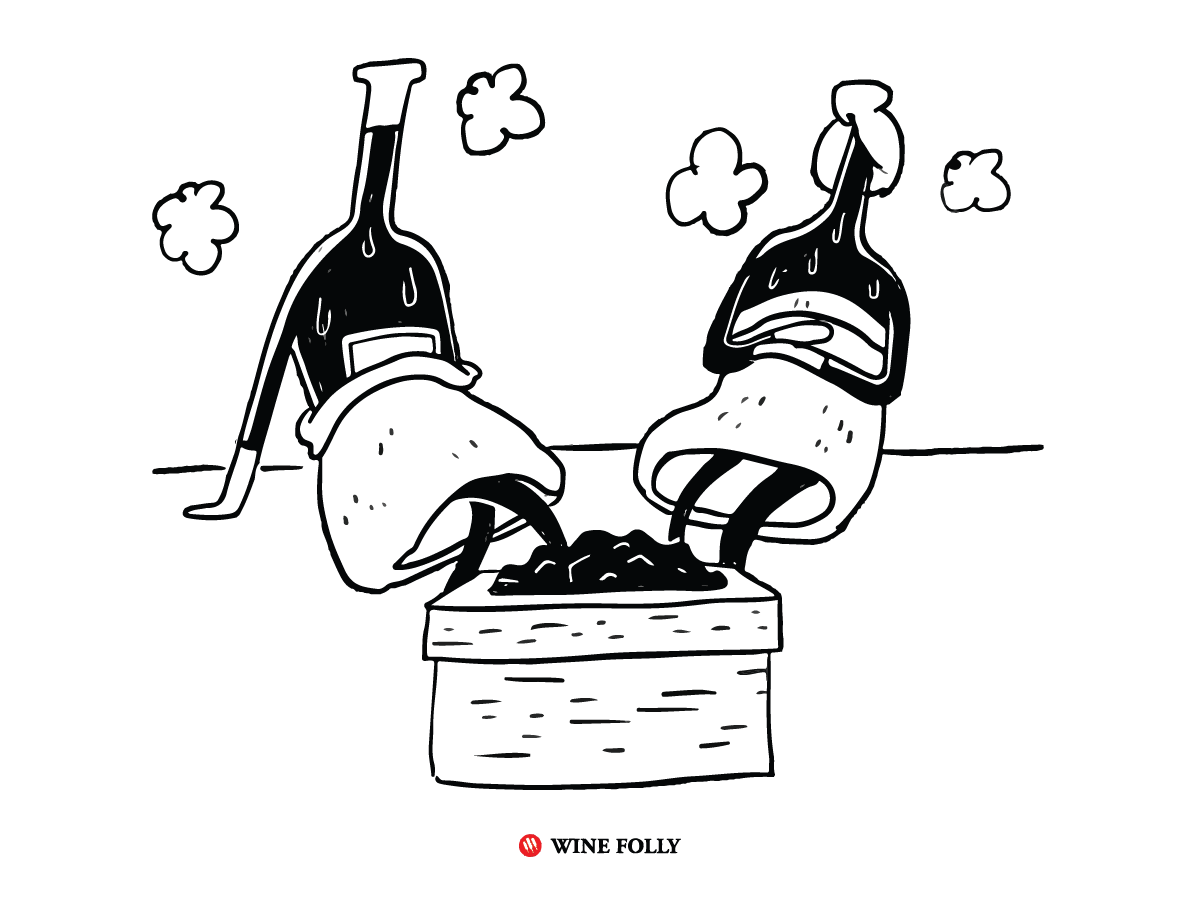
Heat Damage …aka cooked wine (“madeirized” wine)
- What it is: Wine ruined by exposure to too much heat. Imagine a pallet of wine cases cooking in the sun in the parking lot behind a wine store in Phoenix, AZ. Yep, this happens more commonly than you might think!
- How you can tell: The wine smells jammy, sort of sweet, but processed. The smell is somewhat like a wine reduction sauce mixed with a nutty, brown, roasted sugar-type aroma. Heat damage often compromises the seal of the bottle (the expansion from the heated air pushes the cork out), and oxidization usually occurs as well.
- Can I fix it? No, but you can store your wine at the proper temperature and ensure you are not the problem. Most people accept 55 degrees as the best cellar temperature. The most important part of storage is a consistent temperature. Be mindful of how hot your garage gets in the summer if that’s where you store your wine. Don’t store wine in your attic.

UV Light Damage …aka lightstrike
- How you can tell: Lightstrike occurs more commonly in delicate white wines like Champagne, Pinot Grigio, and Sauvignon Blanc. It makes the wine smell like a wet wool sweater!
- What it is: Damage caused by exposure to excessive radiation, usually UV, most commonly from storing wine in the sun or near a window.
- Can I fix it? No, but you can be smart about storing your wine out of direct sunlight. The colored glass of wine bottles is supposed to mitigate lightstrike, so if you get a homemade white wine in a mason jar, put it in the darkest corner of your cellar.
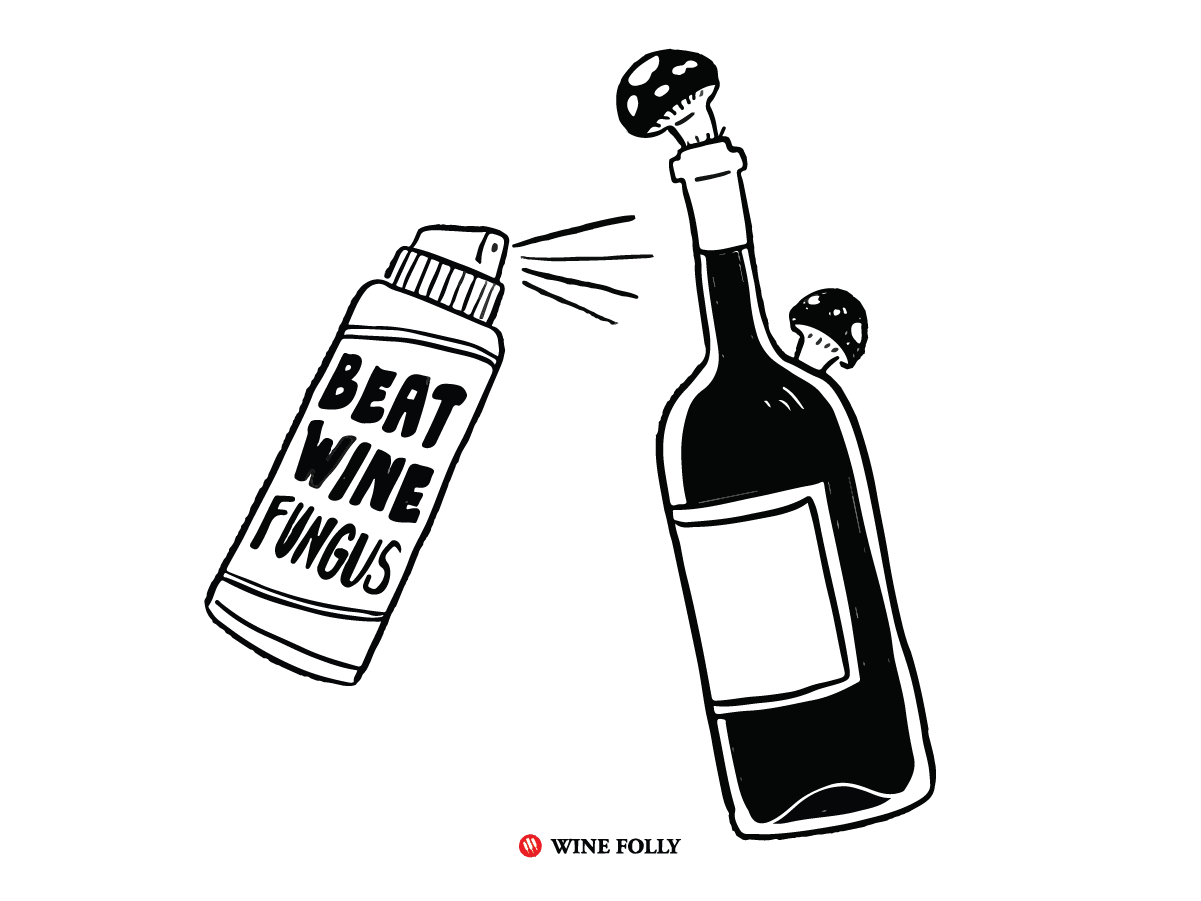
Microbial and Bacterial Taint …aka I think something is growing in there
- How you can tell: Again, there are many other bacteria involved in winemaking. They impart certain positive flavors but also produce signature wine faults. For example, if your wine smells like a gerbil cage, sommeliers call this “mousy,” often found in natural wines.
When you try a wine and breathe out and get a whiff of hay bail, this is called “ropiness” and suggests another over-productive wild microbe.
Think of microbes as spices. In the right quantities, they add an appealing complexity, but too much overwhelms the wine.
- What it is: Many microbes live during the wine fermentation in addition to yeast. If one of these colonies becomes too aggressively present pre- or post-alcoholic fermentation, you can start to get various off aromas. They add appealing complexity in small amounts, but if the colony becomes too vigorous, these flavors are considered faults, like too much salt in a dish.
- Can I fix it? Unfortunately, no. Once it’s in there, that’s what you’ve got! Grab the microscope and go exploring!

Not All Wine Faults Are Actually Wine Faults

Volatile Acidity …aka Acetic acid
What it is: This can be one of the most common wine faults, known as vinegar taint, but it is also a tool used by some high-quality winemakers to develop complexity in their flavor profiles.
Very high levels of acetic acid can smell like balsamic vinaigrette. In other words, some vinegar taint is on purpose and that style just isn’t for you. Some acetic acid is a winemaking fault, an accidental process caused when fermenting very-sweet grapes.
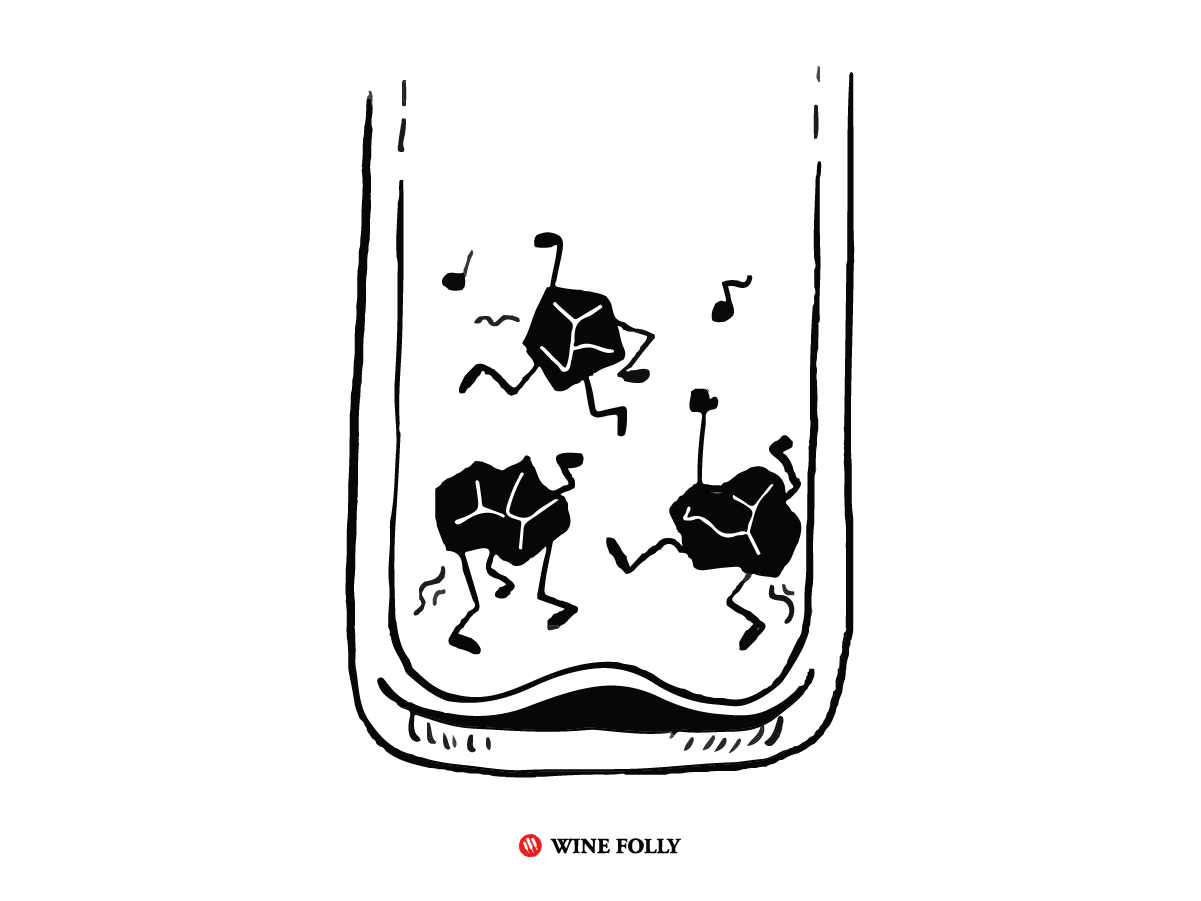
Tartrate Crystals …”glass” shards
What it is: These are mineral precipitates that form out of unfiltered, high-mineral wines. They are little crystals sitting on the bottom of older bottles. They won’t cause you harm, so long as you don’t cut yourself on them (just kidding!). All you need to do is decant the wine with a filter and leave the sediment in the bottle.
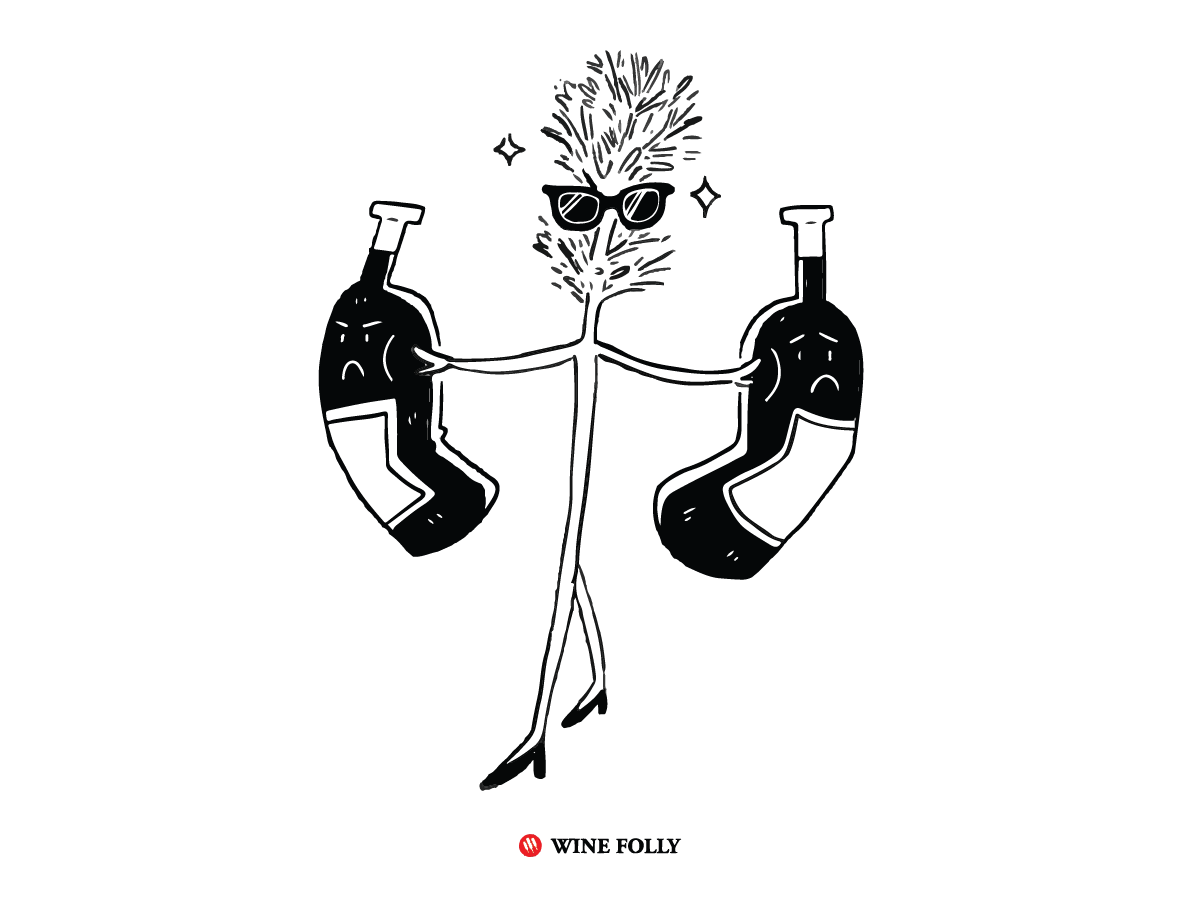
Herbal Aromas …smells “green”
What it is: Herbal aromas are typical parts of certain varietally-specific flavor profiles that can smell of grass, eucalyptus, or asparagus. The most common of these chemicals is methoxypyrazine, or “pyrazines” for short, commonly found in Bordeaux-family grapes. To new or unfamiliar wine drinkers, these aromas can seem similar to sulfur or microbial wine faults, but they’re not!
We recommend trying a lot of wines to learn the difference!
Brett …smells “like a farm”
What it is: Brett is short for Brettanomyces, a very odiferous type of wild yeast! Bretty wines smell like a farmyard, hay bails, sweaty saddle, Band-Aid, or “horsey.” Even in very low amounts, Brett often gives wine a metallic taste on the finish.
Despite how horrible this might sound to you, Brett is a wild thing that is loved for creating complexity.
It’s certainly not okay in some wines (such as white wines or Pinot Noir), but in Cabernet Sauvignon, Syrah, or Carignan, it adds interest. Some of you love it; others hate it. But there’s no denying that Brett will be a thing in wine for years to come.
There’s so much more to learn about wine and your journey has just begun with wine faults – join the Wine Folly newsletter and you’ll gain access to our Wine 101 course.